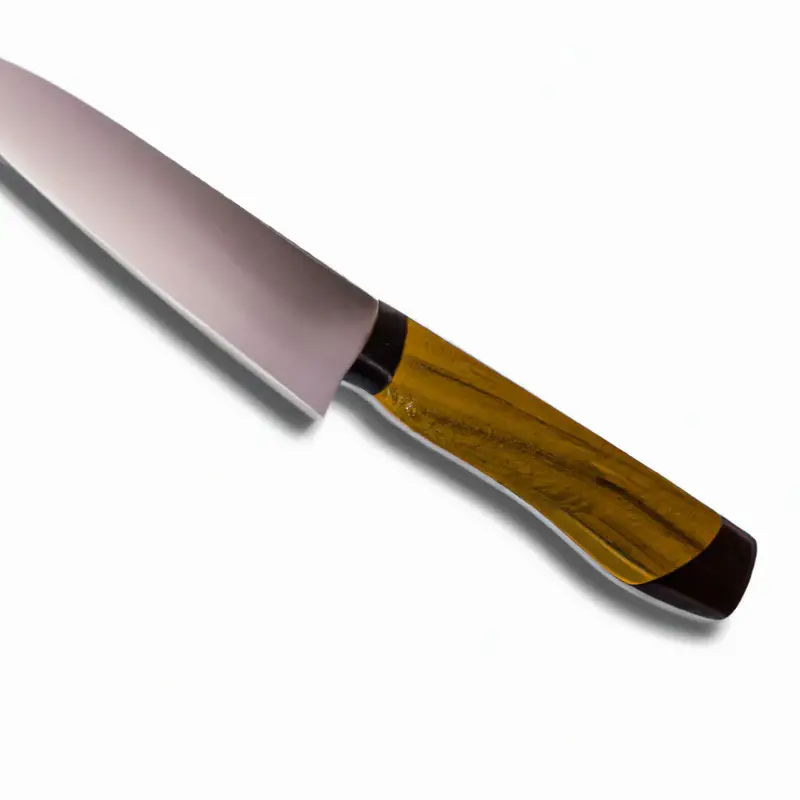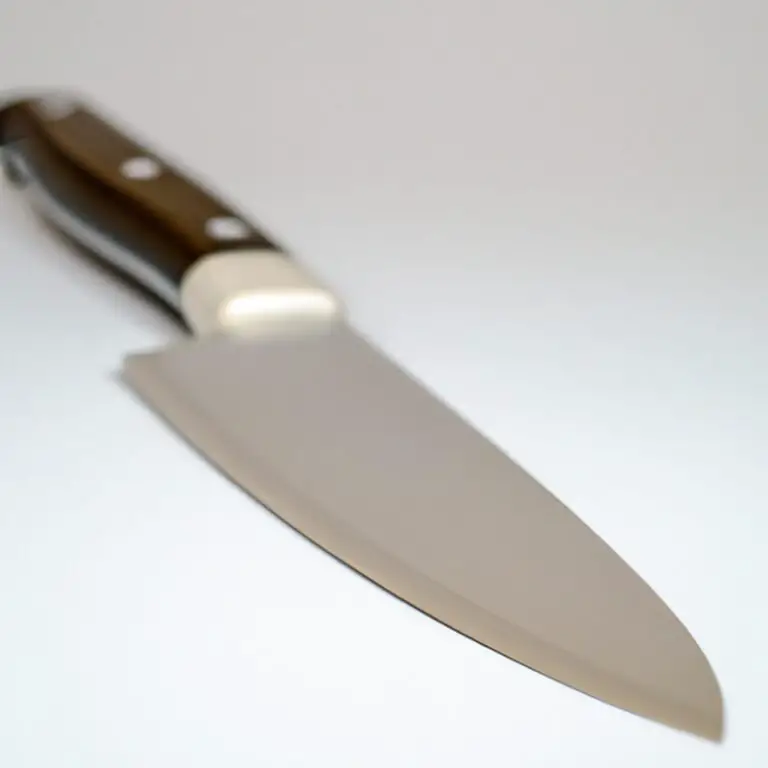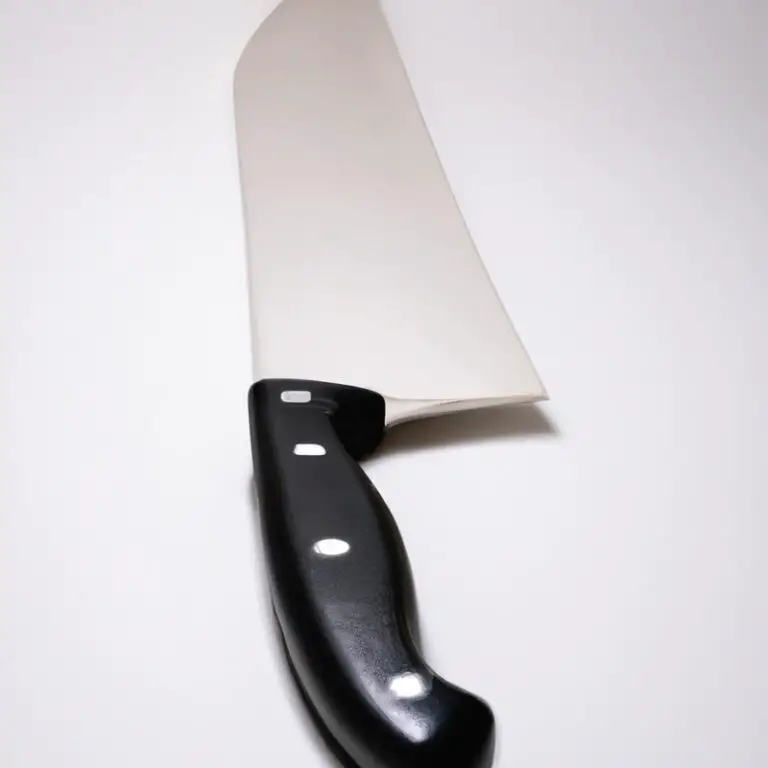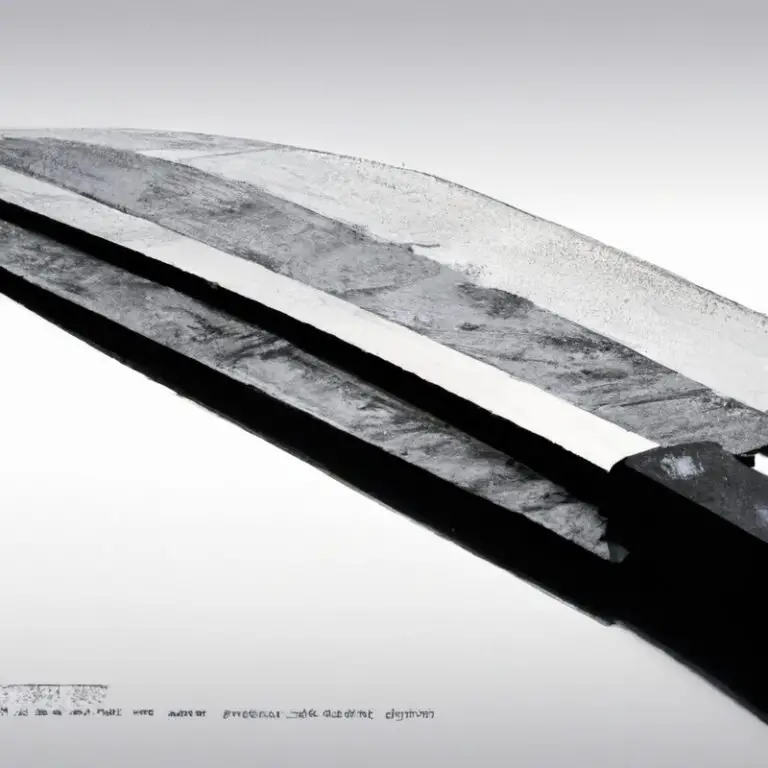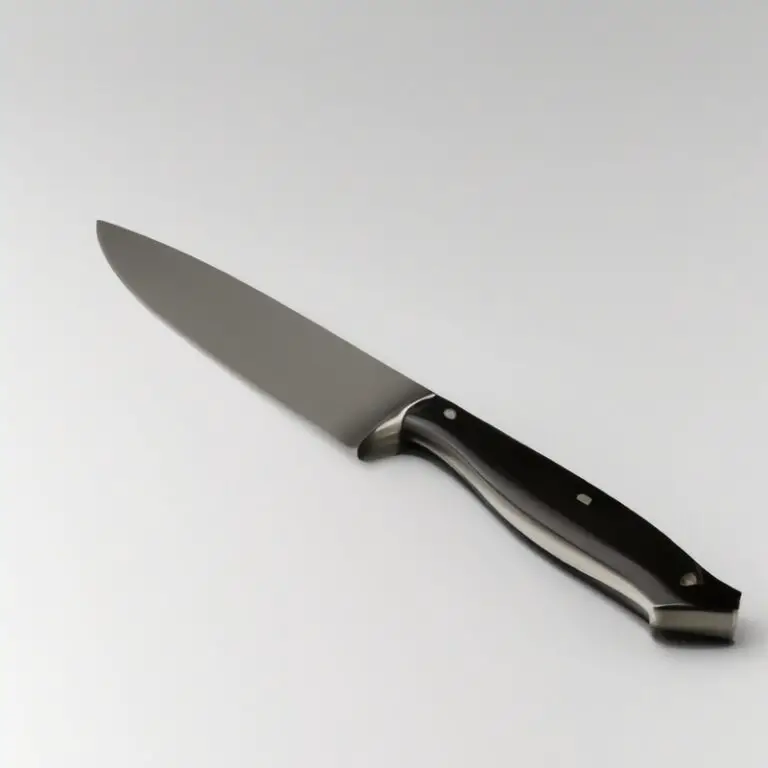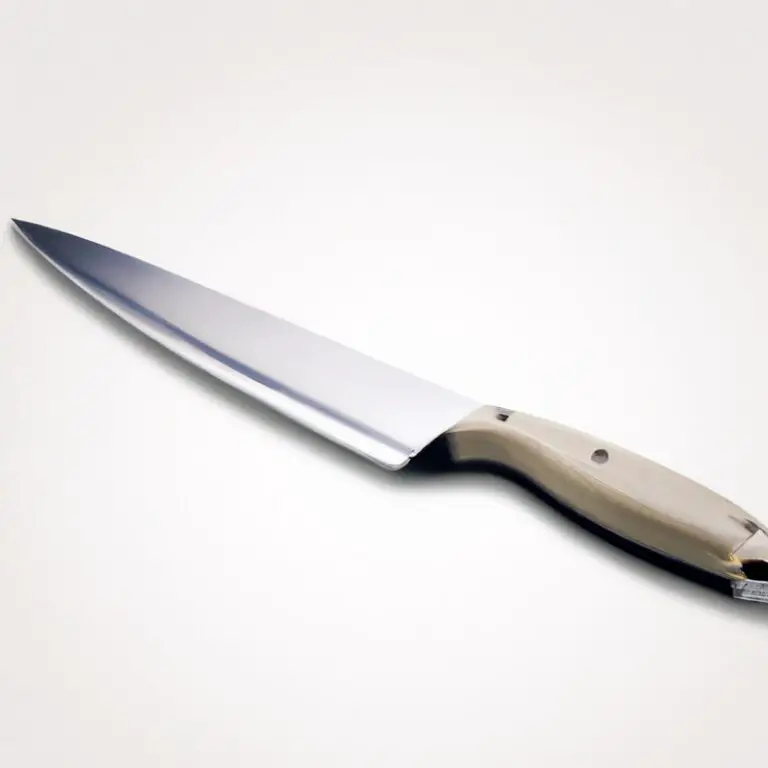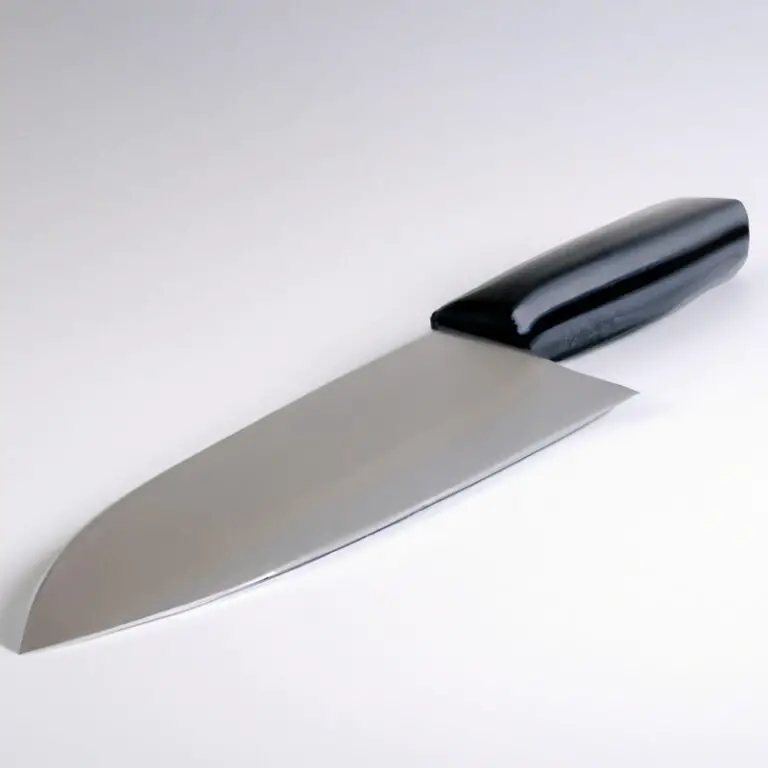What Is a Gyuto Knife Used For?
Key Takeaways:
- The Gyuto knife is a versatile and multipurpose kitchen tool that can be used for a wide range of cutting, slicing, and chopping tasks.
- As a Japanese-style chef’s knife, the Gyuto is designed to be lighter and thinner than traditional Western knives, making it ideal for precision work and delicate cuts.
- Whether you’re a professional chef or a home cook, investing in a high-quality Gyuto knife can significantly enhance your cooking skills and improve the quality of your dishes.
- With its sharp and durable blade, ergonomic handle, and stylish design, the Gyuto knife is a must-have tool for anyone who is serious about cooking and wants to elevate their culinary experience.
Are you tired of using multiple knives for different tasks in your kitchen? Look no further than the Gyuto knife – the Japanese all-purpose knife.
But what sets it apart from the Western chef’s knife?
And what factors should you consider before purchasing one? As a professional chef with years of experience using the Gyuto knife, I am here to give you an in-depth understanding of this knife’s versatility and benefits.
From essential cutting techniques to advanced skills, I’ll cover all you need to know about the Gyuto knife.
| Gyuto Knife Uses | Description |
|---|---|
| Cutting Meat | A Gyuto knife is a versatile tool for slicing, dicing, and trimming various types of meat such as beef, pork, chicken, and fish. |
| Chopping Vegetables | Its sharp edge and thin blade make it easy to chop through hard and soft vegetables like carrots, onions, and tomatoes without crushing them. |
| Slicing Fruits | It can also be used to cut and slice fruits such as apples, mangoes, and strawberries due to its precision and efficient slicing ability. |
| Cleaning Poultry | The long and thin blade allows for easy cleaning and filleting of poultry like chicken and turkey, often requiring less effort compared to other knives. |
| Preparing Sushi | Gyuto knives are commonly used to make sushi due to their sharpness, precision, and ability to cut through raw fish without causing damage to the flesh. |
The Basics of Gyuto Knives: Understanding the Japanese All-Purpose Knife
A gyuto knife is a Japanese all-purpose knife that has a thinner blade and sharper edge compared to Western chef’s knives. It is ideal for slicing, chopping, and dicing vegetables, meat, and fish.
The blade’s length ranges from 7 to 12 inches, perfect for cutting through larger ingredients.
The gyuto knife’s blade is made from high-carbon steel, which is durable and retains its sharpness for a longer time. The knife’s handle is typically made from wood and is ergonomically designed to offer a comfortable grip and maximum control during use.
Owning a gyuto knife is a worthwhile investment for home cooks and professional chefs alike.
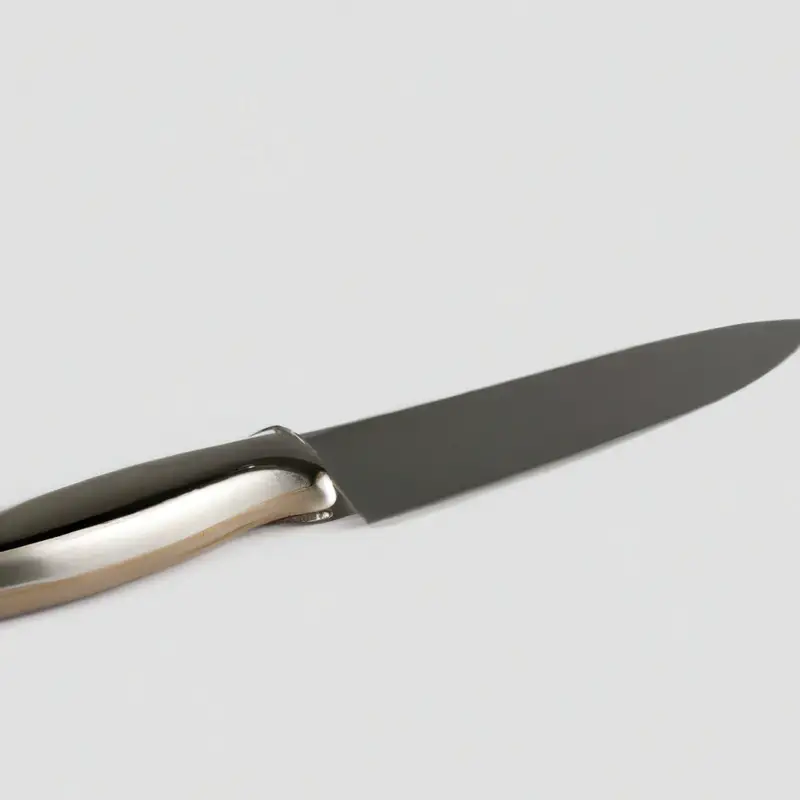
Gyuto Knives vs. Western Chef’s Knives: What Sets Them Apart
Gyuto knives are often compared to Western chef’s knives because they have similar uses. However, there are some significant differences between them.
Gyuto knives are lighter and have thinner blades than Western chef’s knives, making them perfect for precision tasks like slicing vegetables and meat.
They are also single-beveled, which means they can make cleaner cuts than Western chef’s knives. Western chef’s knives, on the other hand, are heavier and have thicker blades, which makes them suitable for chopping and rigorous tasks like breaking down chicken and cutting through bones.
They are also double-beveled, which makes them more versatile than Gyuto knives.
An In-Depth Look at the Anatomy of a Gyuto Knife
The Gyuto knife has a unique anatomy that sets it apart from Western-style chef’s knives. The blade is typically thin and sharp, measuring between 8 to 12 inches in length and gently curving towards the tip.
The edge is beveled on both sides, making it suitable for both right and left-handed users.
The spine of the knife is thick and gradually tapers towards the tip, allowing for precise control and flexibility when cutting. The handle is typically made of wood, plastic, or other durable materials and is designed for a comfortable grip.
Some Gyuto knives also feature a full tang, which means that the blade extends the full length of the handle, providing additional stability and strength.
Overall, the Gyuto knife’s unique anatomy makes it a versatile tool for a wide range of cutting techniques, including slicing, dicing, and chopping. Whether you’re a professional chef or a home cook, the Gyuto knife is an excellent addition to your kitchen arsenal.
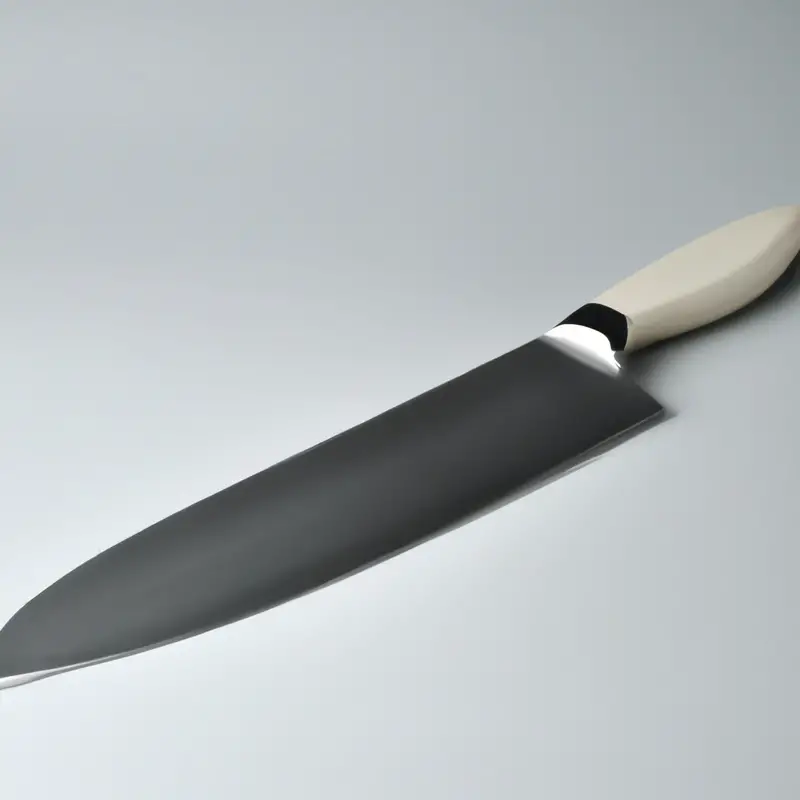
Finding the Perfect Gyuto Knife: Factors to Consider Before Making a Purchase
Before purchasing a Gyuto knife, there are a few factors to consider. First, the blade’s length should match the user’s cutting technique and hand size.
Generally, a 210mm to 240mm blade length is recommended for home cooks, while professional chefs may prefer a longer blade.
Blade material is also important, with high-carbon steel and stainless steel being the most common. High-carbon steel allows for sharper and more durable edges, while stainless steel offers easy maintenance and rust resistance.
The knife’s handle should also be comfortable to grip and made from durable materials such as wood or synthetic materials.
Finally, consider the knife’s overall balance, weight, and price point when making a decision. By considering these factors, you can find the perfect Gyuto knife to fit your needs and preferences.
How to Properly Hold and Grip a Gyuto Knife for Maximum Control
Properly holding and gripping a Gyuto knife is essential to achieve maximum control while using it. To begin, grip the knife with your dominant hand, wrapping your fingers around the handle.
Make sure your thumb rests on the spine of the blade for support and balance.
The grip should be firm but not too tight to allow for flexibility in movement. Next, position your index finger and middle finger on either side of the bolster, providing additional support and stability.
Keep your other fingers curled inward to avoid them from getting cut during use.
When cutting with a Gyuto knife, use a pinch grip by placing your thumb and index finger on either side of the blade, just above the heel, and curl the rest of your fingers around the handle. This technique provides maximum control and precision when guiding the blade through the food.
It’s also important to maintain a proper posture when holding a Gyuto knife.
Stand with your feet shoulder-width apart, and keep your hips and shoulders aligned. Ensure the cutting board is at waist height to prevent slouching and minimize the risk of fatigue or injury.
Overall, proper grip and posture are essential when using a Gyuto knife to achieve precise cutting results while minimizing the risk of accidents.
Essential Cutting Techniques for Gyuto Knives: Mastering Slicing, Chopping, and Dicing
To make the most out of your Gyuto knife, it’s essential to master slicing, chopping, and dicing techniques. Here are some tips to ensure you get the most out of your cutting experience:
- Slicing: To make clean and delicate slices, hold the knife at a 45-degree angle and make a smooth back-and-forth motion, using the full length of the blade.
- Chopping: For efficient and clean chopping, use a chopping board and hold the knife perpendicular to the board. Rock the blade up and down while moving the tip in a circular motion.
- Dicing: Start by slicing the food into even-sized planks, then stack them and make multiple lengthwise cuts. Finally, make crosswise cuts to achieve perfectly diced pieces.
Remember to keep your knife sharp and to use the correct grip to ensure maximum control while cutting. With these fundamental techniques, you can achieve precision and speed when preparing your meals with your Gyuto knife.
The Benefits of Using a Gyuto Knife for Home Cooks and Professional Chefs
The Gyuto knife has numerous benefits for both home cooks and professional chefs. Here are some reasons why you should consider using a Gyuto knife:
- Versatility: The Gyuto knife is an all-purpose knife suitable for a wide range of tasks, including slicing, dicing, and chopping. Its sharpness and slender blade make it ideal for precision cuts.
- Comfort: With a Gyuto knife’s ergonomic handle and balanced weight, it offers comfort during extended use. This ensures reduced fatigue and a seamless experience in the kitchen.
- Durability: Gyuto knives are constructed with high-quality steel that ensures long-lasting durability and reliability. This means you can rely on the knife for years to come.
- Precision: Due to the angle of the blade and thinness of the blade’s edge, the gyuto knife is incredibly precise. It cuts with great accuracy, making it perfect for delicate dishes.
- Beauty: Gyuto knives are crafted and designed with attention to detail, with beautiful hand-forged or machine-finished blades. Using a beautiful tool while cooking makes the whole experience more enjoyable.
The Gyuto knife offers a wide range of benefits to both home cooks and professional chefs. The knife’s versatility, comfort, durability, precision, and beauty make it an essential tool in any kitchen.
How to Maintain and Care for Your Gyuto Knife: Simple Tips and Tricks
To keep your Gyuto knife in top condition, it is essential to maintain and care for it properly. Here are some simple tips and tricks for maintaining your Gyuto knife:
- Hand wash and dry immediately: Always hand wash your Gyuto knife with mild soap and warm water. Dry it immediately with a soft cloth to prevent rust and corrosion.
- Store properly: Store your Gyuto knife in a knife block or on a magnetic strip. Avoid storing it in a drawer with other utensils as this can dull the blade.
- Sharpen regularly: Regular sharpening helps to maintain the sharpness of your Gyuto knife. Use a honing steel or a whetstone to sharpen your blade.
- Use a cutting board: Always use a cutting board made of wood or plastic to protect the blade and prevent dullness.
- Avoid cutting bones or frozen food: Gyuto knives are designed for slicing, chopping, and dicing meat, fish, and vegetables. Avoid using it to cut bones or frozen food as this can chip or damage the blade.
By following these simple tips and tricks, you can ensure that your Gyuto knife lasts a long time and remains sharp and efficient.
Exploring the Best Ways to Sharpen a Gyuto Knife: Honing vs. Whetstone
Maintaining a sharp edge on your Gyuto knife is crucial for optimal performance and safety. There are two common methods for sharpening a Gyuto knife: honing and using a whetstone.
Honing involves using a honing steel to maintain the edge’s alignment, while a whetstone sharpens and refines the blade’s edge.
Honing is recommended for regular maintenance in between sharpenings. It aligns the microscopic teeth on the blade, which can bend out of shape during use.
Honing is a simple process that can be done quickly before every use.
Hold the honing steel perpendicular to the table and the blade at a 20-degree angle, then swipe the blade down the steel’s edge, using light pressure. Repeat this process on the other side of the blade.
While honing maintains the blade’s alignment, it does not sharpen the blade.
To sharpen a dull Gyuto knife, a whetstone is recommended. It sharpens and refines the blade’s edge, restoring its sharpness.
Using a whetstone requires more skill and patience than honing.
You must maintain a consistent angle as you swipe the blade across the stone, alternating sides, and ensuring the blade’s edge stays wet. Whetstones come in different grits, from coarse to fine.
Coarse grit removes the most material from the blade, while fine grit polishes and refines the edge.
Choose the grit based on how dull the blade is, and how much time you are willing to invest in the sharpening process. Honing and using a whetstone are both effective in keeping your Gyuto knife sharp.
Honing is recommended for regular maintenance, while a whetstone is necessary for sharpening a dull blade.
Both methods require patience and diligence, but can significantly improve your knife’s performance and lifespan.
Going Beyond the Basics: Advanced Gyuto Knife Techniques for Skilled Chefs
Skilled chefs adept in basic gyuto knife techniques can take their cutting skills to the next level by exploring advanced techniques. These techniques include the backhand slice, the lever cut, the cross chop, and the tip drop.
They require years of practice and experience, but they can lead to increased speed, accuracy, and precision in the kitchen.
The backhand slice involves turning the knife handle to the left or right while keeping the blade facing forward. This technique is useful for slicing delicate ingredients such as herbs and fruits.
The lever cut involves using the blade’s heel as a pivot point while making a downward slicing motion.
This technique is used for cutting through tough ingredients such as bones or harder vegetables. The cross chop involves making a series of quick chopping motions while slightly angling the blade.
This technique is used for dicing and mincing larger ingredients such as onions or garlic.
The tip drop involves using the tip of the blade to initiate the cut and then dropping the remaining part of the blade down in a slashing motion. This technique is useful for carving meats and poultry.
Bear in mind that these techniques require a lot of practice and patience to master.
Also, make sure your gyuto knife is sharp and well-maintained, or the techniques won’t be as effective.
Final Verdict
The Gyuto knife is a powerful cutting tool that is essential for every home cook and professional chef. Its versatility, sharpness, and precision make it a go-to knife for various tasks in the kitchen.
From slicing and chopping to dicing and mincing, the Gyuto knife is perfect for all your culinary needs.
By understanding its anatomy, holding it correctly, and following proper cutting techniques, you’ll be on your way to becoming a master chef in no time. By investing in and caring for a high-quality Gyuto knife, you can enhance your cooking skills, save time, and achieve impressive results.
Remember, a well-maintained Gyuto knife is not just a kitchen tool, it’s an investment in your culinary journey.

